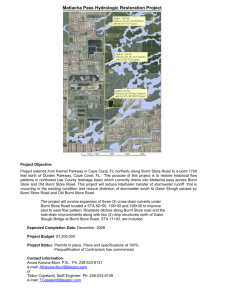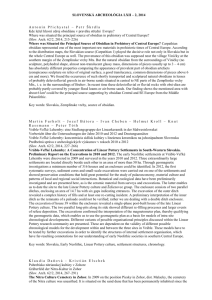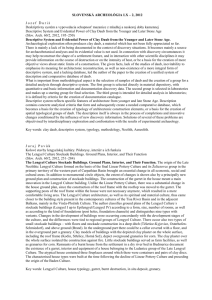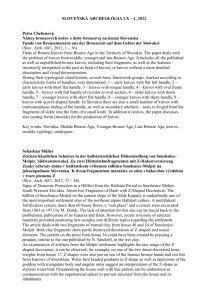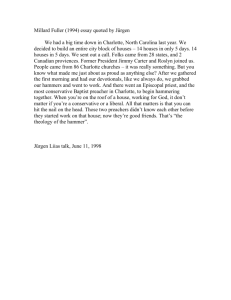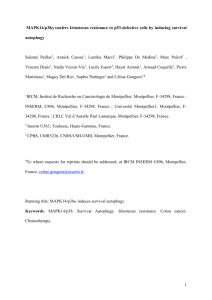vo formáte *
advertisement
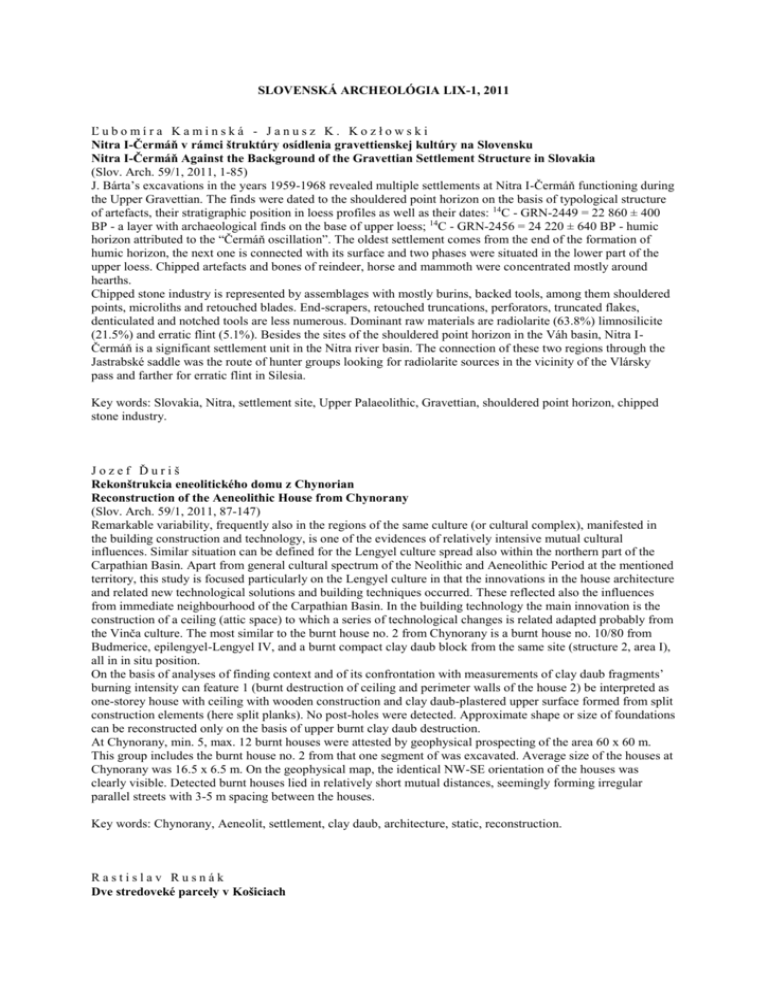
SLOVENSKÁ ARCHEOLÓGIA LIX-1, 2011 Ľubomíra Kaminská - Janusz K. Kozłowski Nitra I-Čermáň v rámci štruktúry osídlenia gravettienskej kultúry na Slovensku Nitra I-Čermáň Against the Background of the Gravettian Settlement Structure in Slovakia (Slov. Arch. 59/1, 2011, 1-85) J. Bárta’s excavations in the years 1959-1968 revealed multiple settlements at Nitra I-Čermáň functioning during the Upper Gravettian. The finds were dated to the shouldered point horizon on the basis of typological structure of artefacts, their stratigraphic position in loess profiles as well as their dates: 14C - GRN-2449 = 22 860 ± 400 BP - a layer with archaeological finds on the base of upper loess; 14C - GRN-2456 = 24 220 ± 640 BP - humic horizon attributed to the “Čermáň oscillation”. The oldest settlement comes from the end of the formation of humic horizon, the next one is connected with its surface and two phases were situated in the lower part of the upper loess. Chipped artefacts and bones of reindeer, horse and mammoth were concentrated mostly around hearths. Chipped stone industry is represented by assemblages with mostly burins, backed tools, among them shouldered points, microliths and retouched blades. End-scrapers, retouched truncations, perforators, truncated flakes, denticulated and notched tools are less numerous. Dominant raw materials are radiolarite (63.8%) limnosilicite (21.5%) and erratic flint (5.1%). Besides the sites of the shouldered point horizon in the Váh basin, Nitra IČermáň is a significant settlement unit in the Nitra river basin. The connection of these two regions through the Jastrabské saddle was the route of hunter groups looking for radiolarite sources in the vicinity of the Vlársky pass and farther for erratic flint in Silesia. Key words: Slovakia, Nitra, settlement site, Upper Palaeolithic, Gravettian, shouldered point horizon, chipped stone industry. Jozef Ďuriš Rekonštrukcia eneolitického domu z Chynorian Reconstruction of the Aeneolithic House from Chynorany (Slov. Arch. 59/1, 2011, 87-147) Remarkable variability, frequently also in the regions of the same culture (or cultural complex), manifested in the building construction and technology, is one of the evidences of relatively intensive mutual cultural influences. Similar situation can be defined for the Lengyel culture spread also within the northern part of the Carpathian Basin. Apart from general cultural spectrum of the Neolithic and Aeneolithic Period at the mentioned territory, this study is focused particularly on the Lengyel culture in that the innovations in the house architecture and related new technological solutions and building techniques occurred. These reflected also the influences from immediate neighbourhood of the Carpathian Basin. In the building technology the main innovation is the construction of a ceiling (attic space) to which a series of technological changes is related adapted probably from the Vinča culture. The most similar to the burnt house no. 2 from Chynorany is a burnt house no. 10/80 from Budmerice, epilengyel-Lengyel IV, and a burnt compact clay daub block from the same site (structure 2, area I), all in in situ position. On the basis of analyses of finding context and of its confrontation with measurements of clay daub fragments’ burning intensity can feature 1 (burnt destruction of ceiling and perimeter walls of the house 2) be interpreted as one-storey house with ceiling with wooden construction and clay daub-plastered upper surface formed from split construction elements (here split planks). No post-holes were detected. Approximate shape or size of foundations can be reconstructed only on the basis of upper burnt clay daub destruction. At Chynorany, min. 5, max. 12 burnt houses were attested by geophysical prospecting of the area 60 x 60 m. This group includes the burnt house no. 2 from that one segment of was excavated. Average size of the houses at Chynorany was 16.5 x 6.5 m. On the geophysical map, the identical NW-SE orientation of the houses was clearly visible. Detected burnt houses lied in relatively short mutual distances, seemingly forming irregular parallel streets with 3-5 m spacing between the houses. Key words: Chynorany, Aeneolit, settlement, clay daub, architecture, static, reconstruction. Rastislav Rusnák Dve stredoveké parcely v Košiciach Two Medieval Allotments in Košice (Slov. Arch. 59/1, 2011, 149-188) Archaeological excavation on the allotment 767 at the Kováčska street ranks among the biggest ones concerning house allotments in Košice. In the past the area under research was a part of Franciscan monastery and it probably was a courtyard. There are no written sources documenting the time when the Franciscans settled in Košice and history of the area before their approach. Contemplations on the importance of Kováčska street in the transformation process of the pre-colonization settlement into a medieval city was motivated first of all by its historical name Platea Sclavorum or Windische Gasse (i. e. Slovak Street). The archaeological excavation allowed learning dispositions of two Gothic stone houses, defining their position toward the street and partially reconstructing size and shape of the two vanished medieval allotments. Concerning the houses 1 a 2, foundations of one-roomed buildings with disconnected stairway were preserved, which is one of the basic types of the Gothic urban stone architecture on our territory. This is a double-floored one-winged house with lower floor partially sunken into earth. The first floor as usual had only one room, the second floor was mostly doubleroomed, divided with a wall set on a stone arched line in the lower floor. Construction of the houses 1 and 2 can be dated into the middle of the 14th century; they vanished probably during the first half of the 15 th century. Apart from architecture made of stone, 17 medieval features were revealed during the excavations. They were shallow pits or burnt layers or hearths. Most of them were connected with the activities on the allotments during the houses existence and they can be dated into the 14th - first half of the 15th centuries. Only one pit had bigger size, from which an important assemblage of top medieval pottery dated to the second half of the 13th up to the first third of the 14th centuries was obtained. The assemblage ranks among the biggest ones in the town. Key words: Slovakia, Košice, town, allotment, 13th-15th centuries. Správy Dana Marková: Krst knihy „Radzovce. Osada ľudu popolnicových polí“ a otvorenie stálej archeologickej expozície v Radzovciach (Slov. Arch. 59/1, 2011, 189, 190) Václav Furmánek: Medzinárodné kolokvium „The Beginnings of the First Millennium B. C. in the Tisa Plain and Transylvania. The Gáva culture“ (Slov. Arch. 59/1, 2011, 191, 192) Recenzie Gertrúda Březinová: Ernst Lauermann (Hrsg.): Die latènezeitliche Siedlung von Michelstetten. Die Ausgrabungen des Niederösterreichischen Museums für Urgeschichte in den Jahren 1994-1999 (Slov. Arch. 59/1, 2011, 193, 194) Vladimír Mitáš: Snježana Karavanić: The Urnfield Culture in Continental Croatia (Slov. Arch. 59/1, 2011, 194-198) Dominik Repka: Manuel Zeiler: Untersuchungen zur jüngerlatènezeitlichen Keramikchronologie im östlichen Mitteleuropa (Slov. Arch. 59/1, 2011, 198-201)
